How to Automatically Send Structured Data to Airtable
Contents
When you’re collecting data from an online source, you want to do so in a way that’s easy to organize, store, and format. This is especially true when it comes to automated scraping—information that’s easy to process requires fewer steps in your workflows, which in turn increases speed and accuracy.
You can scrape data from webpages in a structured format using a tool like Browserbear. And because this cloud-based tool can be integrated with others, you can create entire nocode workflows that don’t require you to manually pass data from one program to the next.
In this tutorial, you’ll learn not only how to use Browserbear to scrape structured data but also how to automatically send it to Airtable so it can be used for other processes.
What is Browserbear?
Browserbear is a cloud-based tool for automating web browsing tasks. You can use it to save structured data, test websites, and capture screenshots, among other things.
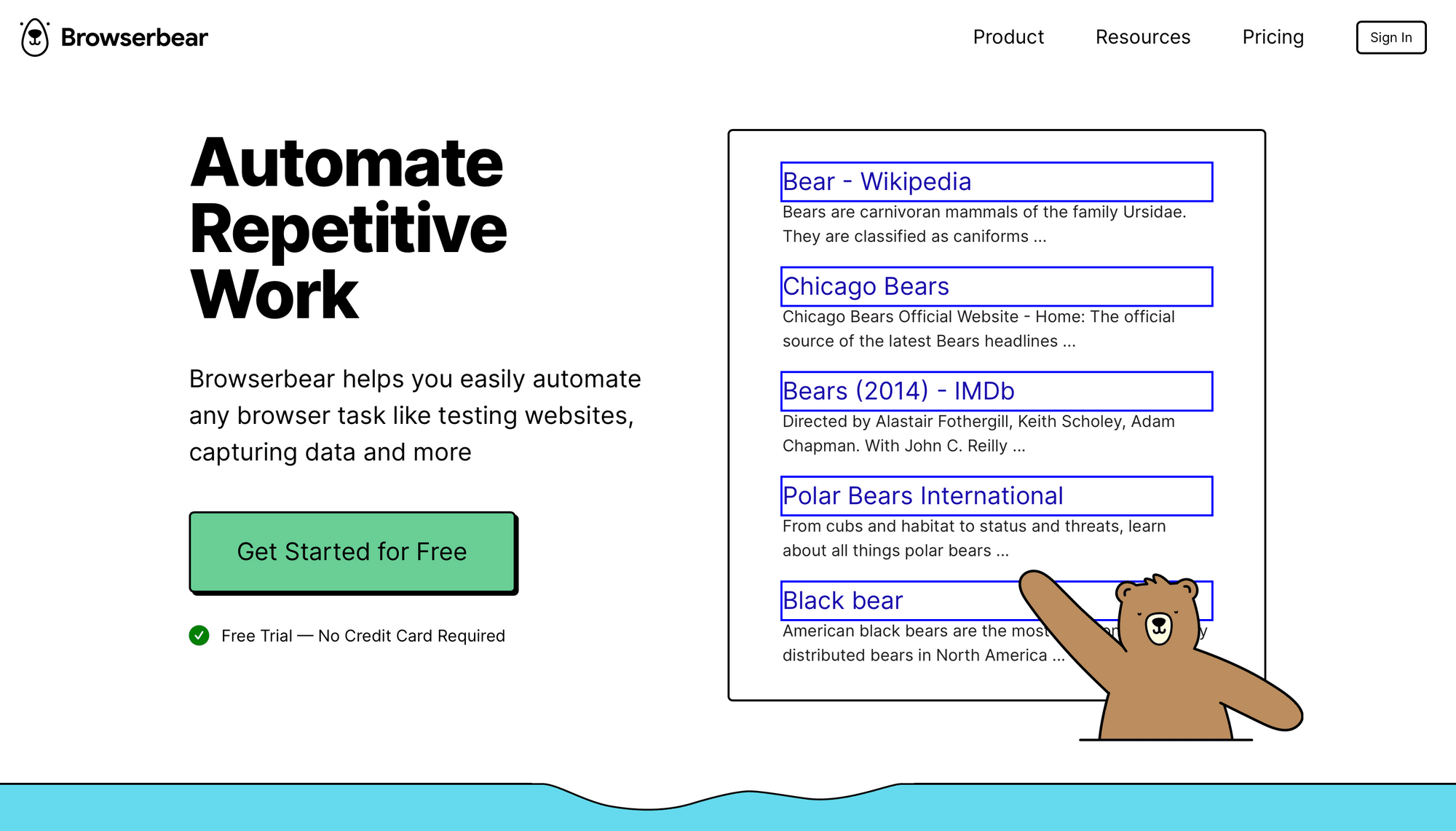
Using Browserbear, you can easily automate actions based on specific conditions by creating a task and triggering it using the REST API or no-code tools such as Zapier and Make. By integrating this task with other tools, you can save, manipulate, and optimize your data. This frees you from manual, repetitive work and allows you to focus on more important tasks.
What is Airtable?
Airtable is a cloud-based platform that brings together the best of spreadsheets and relational data management tools. With over 1,000 native integrations, this app makes it easy to create custom workflows in a few clicks.
Third-party integration services, scripting extensions, automation scripts, webhook triggers, and an enterprise API (Application Programming Interface) also make it possible to take advantage of other apps’ capabilities.
What You Will Create
The structured data you scrape needs to be put into a database before you can use it in other workflows. But it’s not always efficient to manually upload a CSV file whenever you have a new set of data to work with. We will be setting up an automation that scrapes the Browserbear blog page then sends the data to Airtable, creating records for every separate item.
The tools you will be using are:
- Airtable : To store blog card information
- Browserbear : To create a browser automation that scrapes blog card information
- Zapier : To trigger actions in different programs based on pre-specified commands
By the end of the tutorial, you should be able to automatically populate an Airtable database with data:
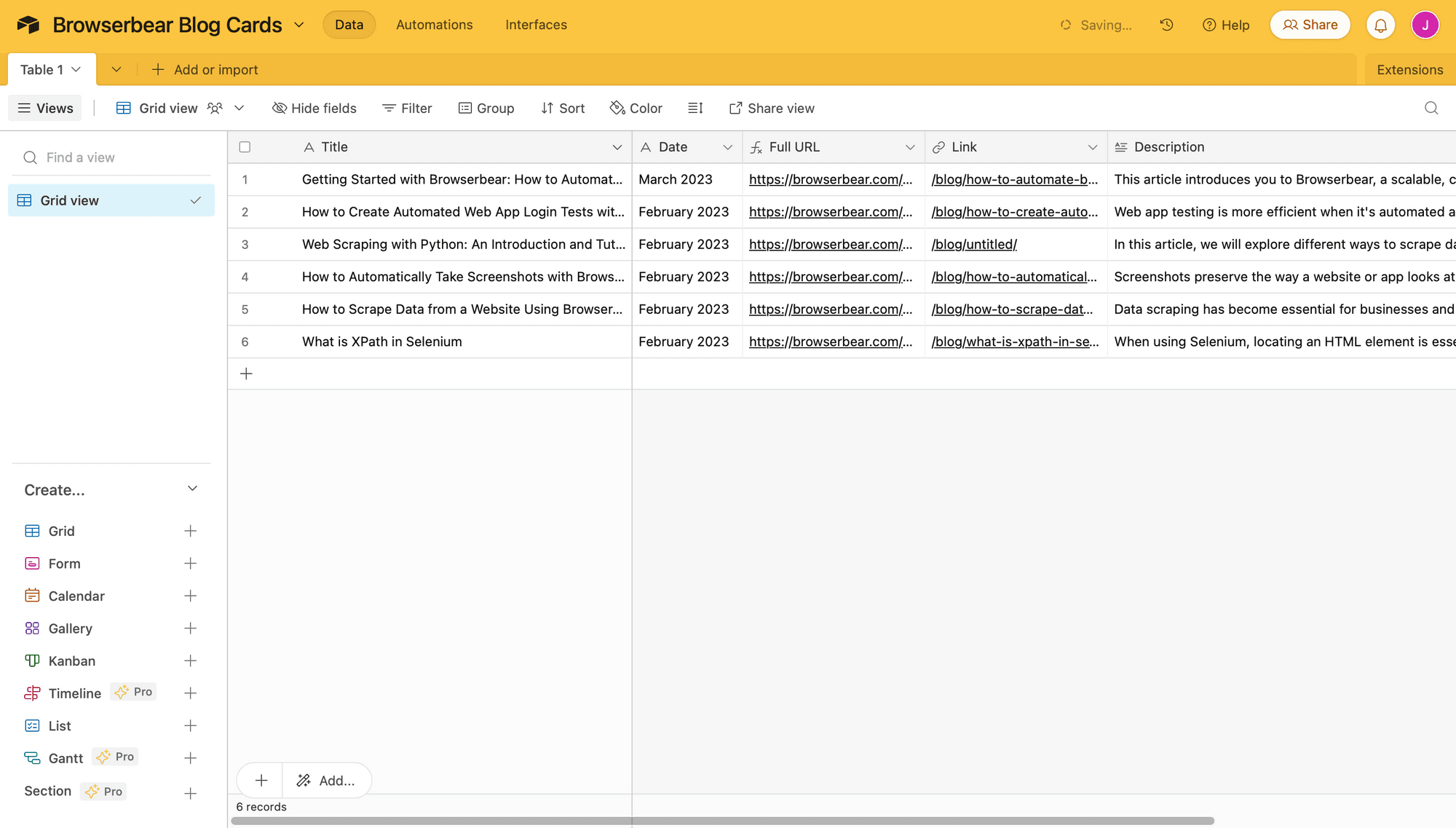
All you need is a Browserbear task, an Airtable base, and Zapier to tie it all together.
How to Send Scraped Structured Data to Airtable
Airtable's many integrations make it a viable storage option for your scraped data from Browserbear. Setting up a workflow with Zapier allows you to automatically create up to 10 new records of scraped data at a time, reducing manual effort on your part.
Here's how to set up a workflow that sends scraped structured data to Airtable:
Create a Browserbear Task
Log into your Browserbear account (or create a free trial account if you don’t have one—no credit card required! 🎉). Go to the Tasks tab, then click Create a Task.
Name the task, then click Save.
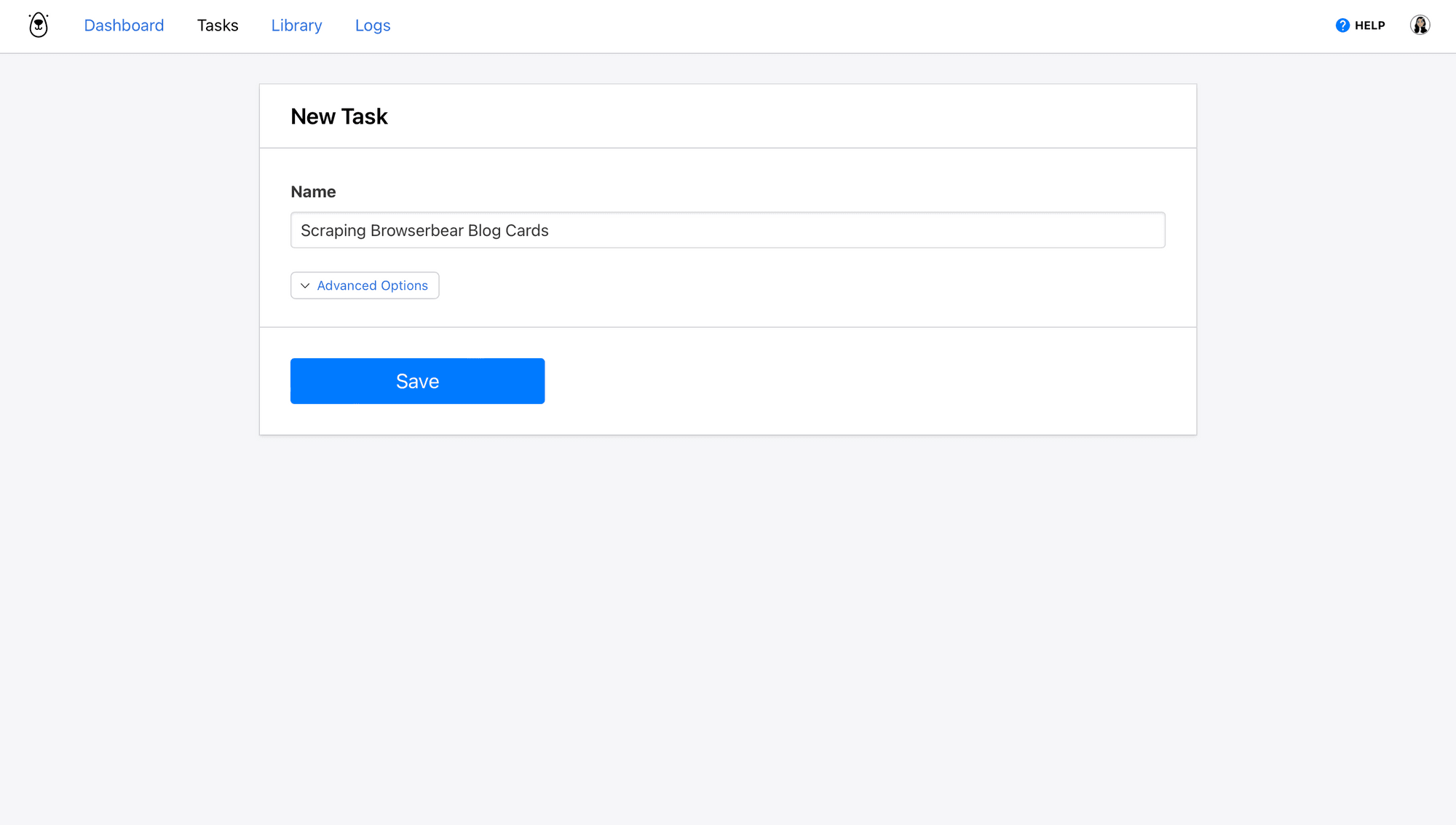
You’ll now be on a task page where you can add steps, run your automation, and view completed runs.
Click Add Step and set up the following actions:
Step 1: Go
This step instructs Browserbear to go to a URL and wait until it has loaded.
Choose go as the Action and insert your destination URL. Select networkidle as the wait instructions.
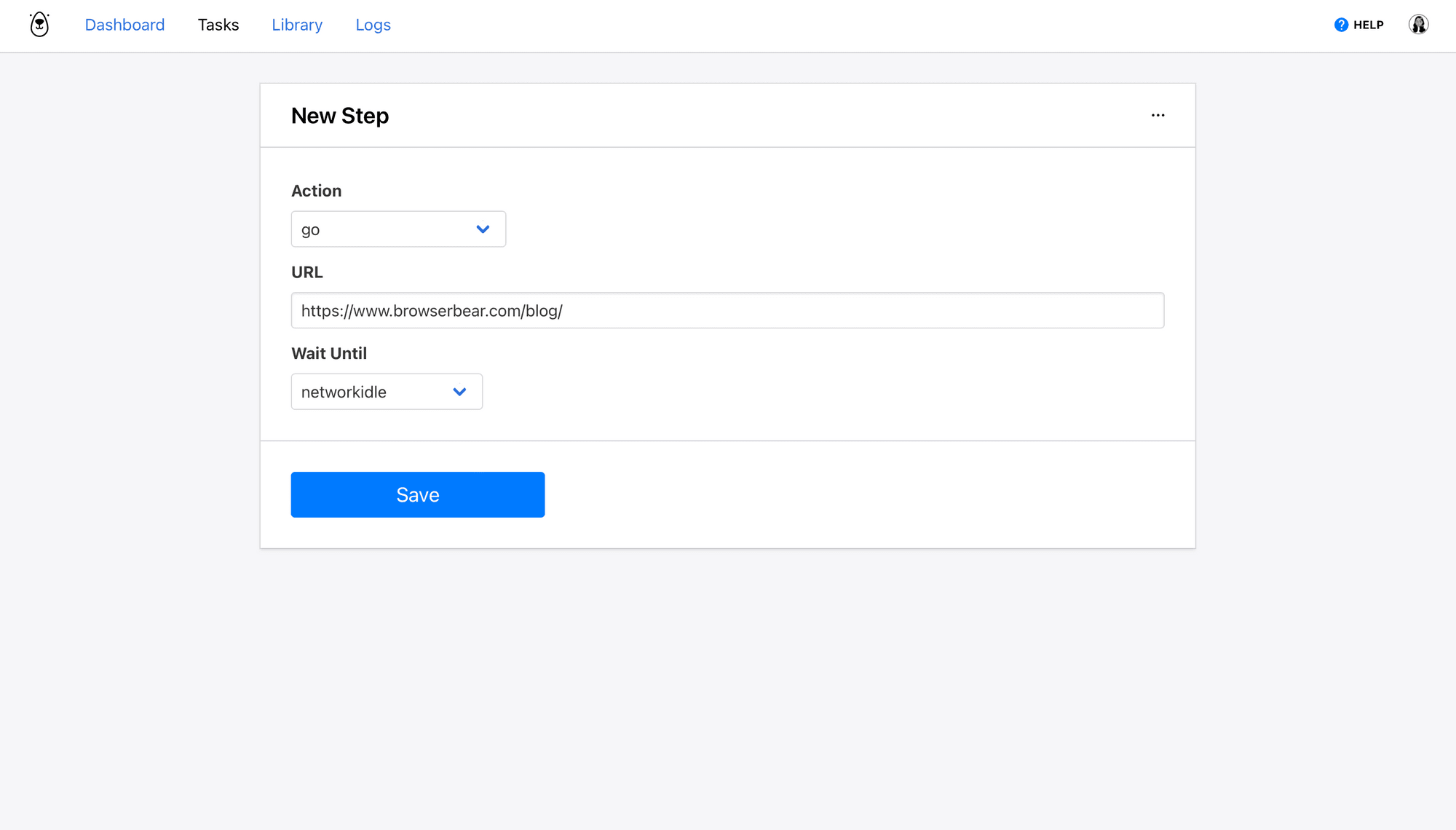
Click Save.
Bear Tip 🐻: The networkidle load instruction waits until no new network requests are made for 500 ms and is safest in the majority of situations. Other options include domcontentloaded and load.
Step 2: Save Structured Data
This step will define a container and the elements you want to scrape within it. You’ll only need to set up the scraping process for one container—it will then apply to all others on the page that contain the same elements.
The Browserbear blog page has six blog cards. Let’s set up a scraping action for the first one.
Choose save_structured_data as the Action.
You will need to use the Browserbear Helper Chrome extension for the helper configs. Activate the extension on the fully loaded destination website.

Hover over the parent container. You should see a blue outline indicate the selection.
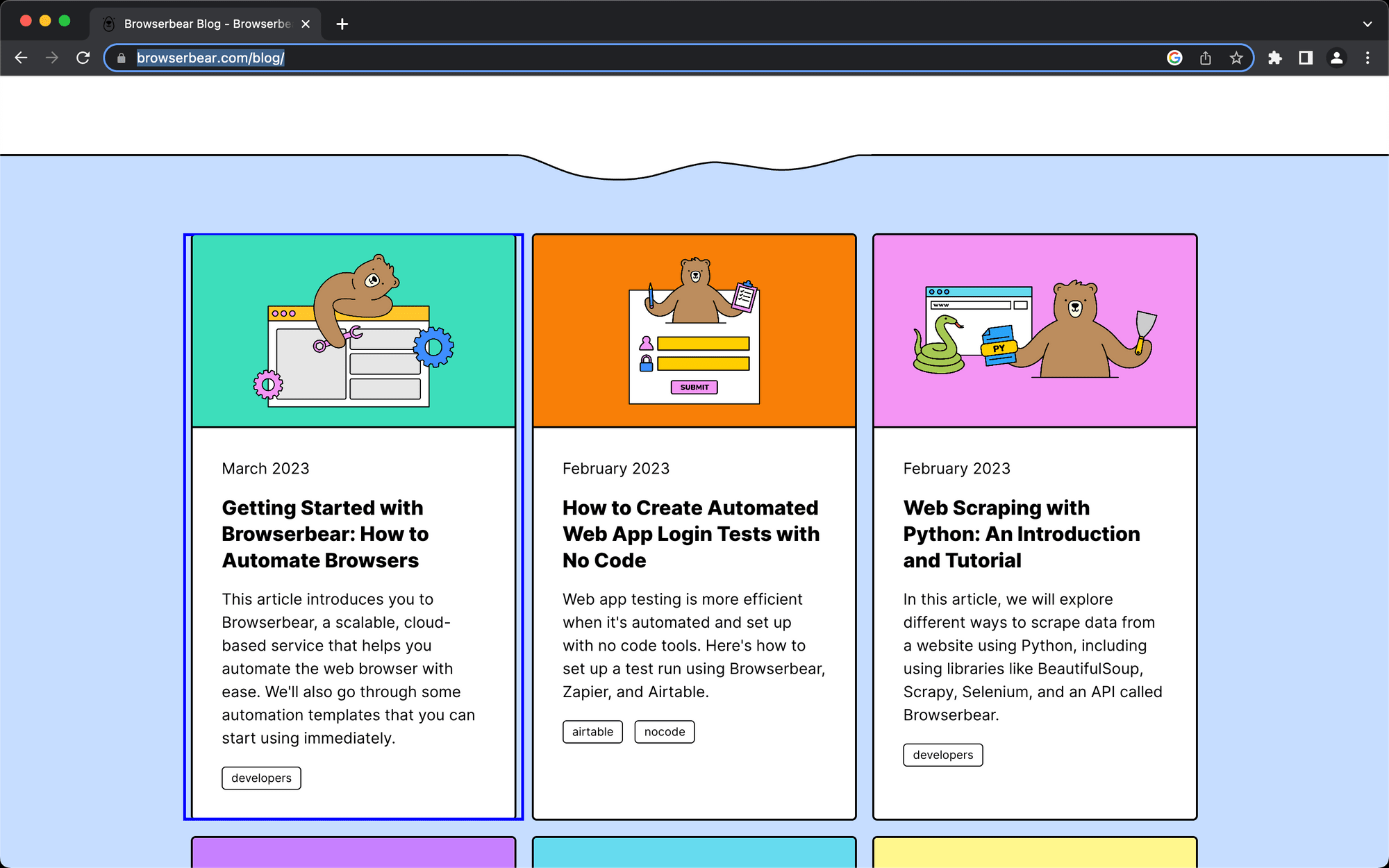
Click the element, then copy the config that appears in the pop up window.
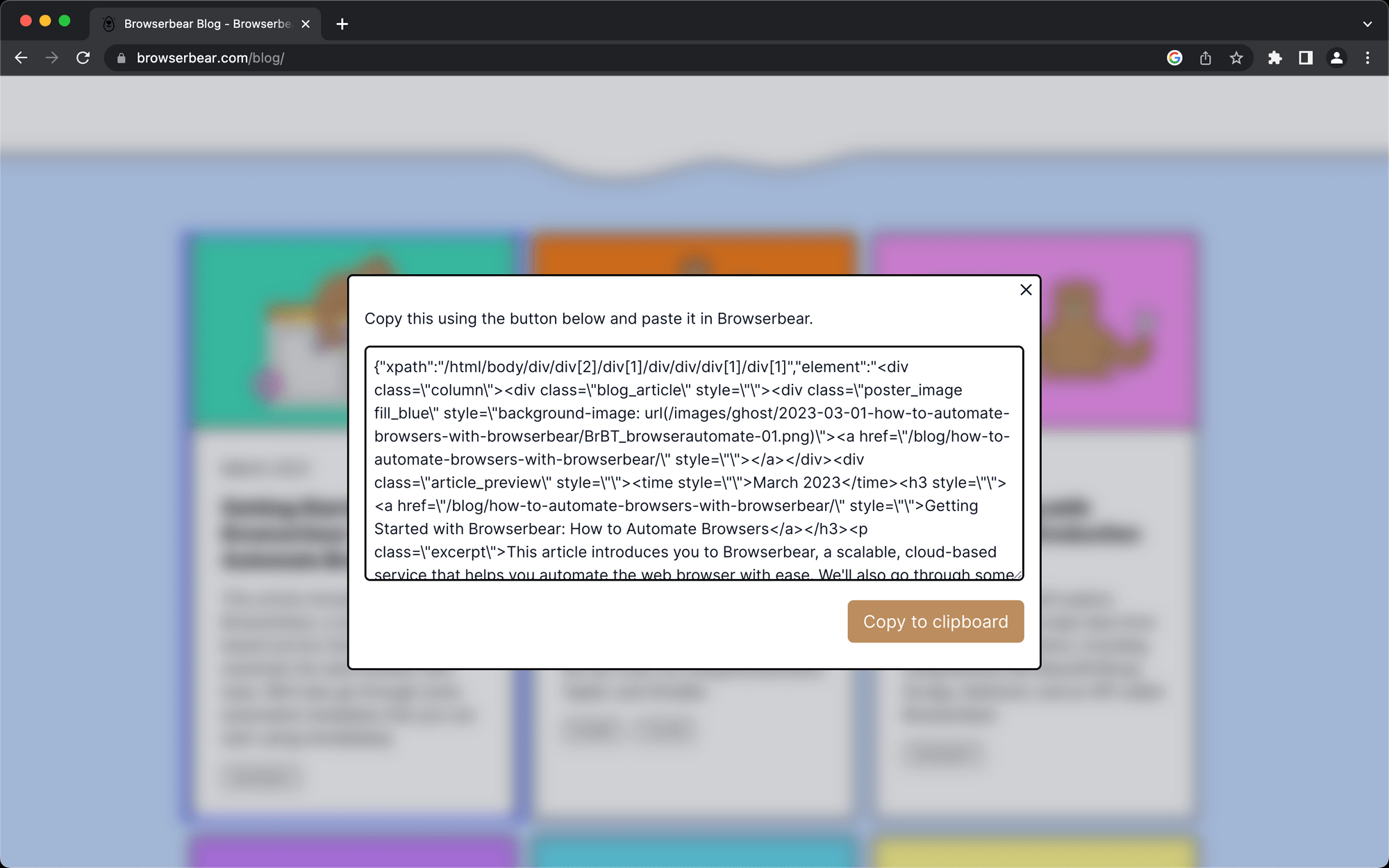
Insert it into the Helper section of your save_structured_data step.
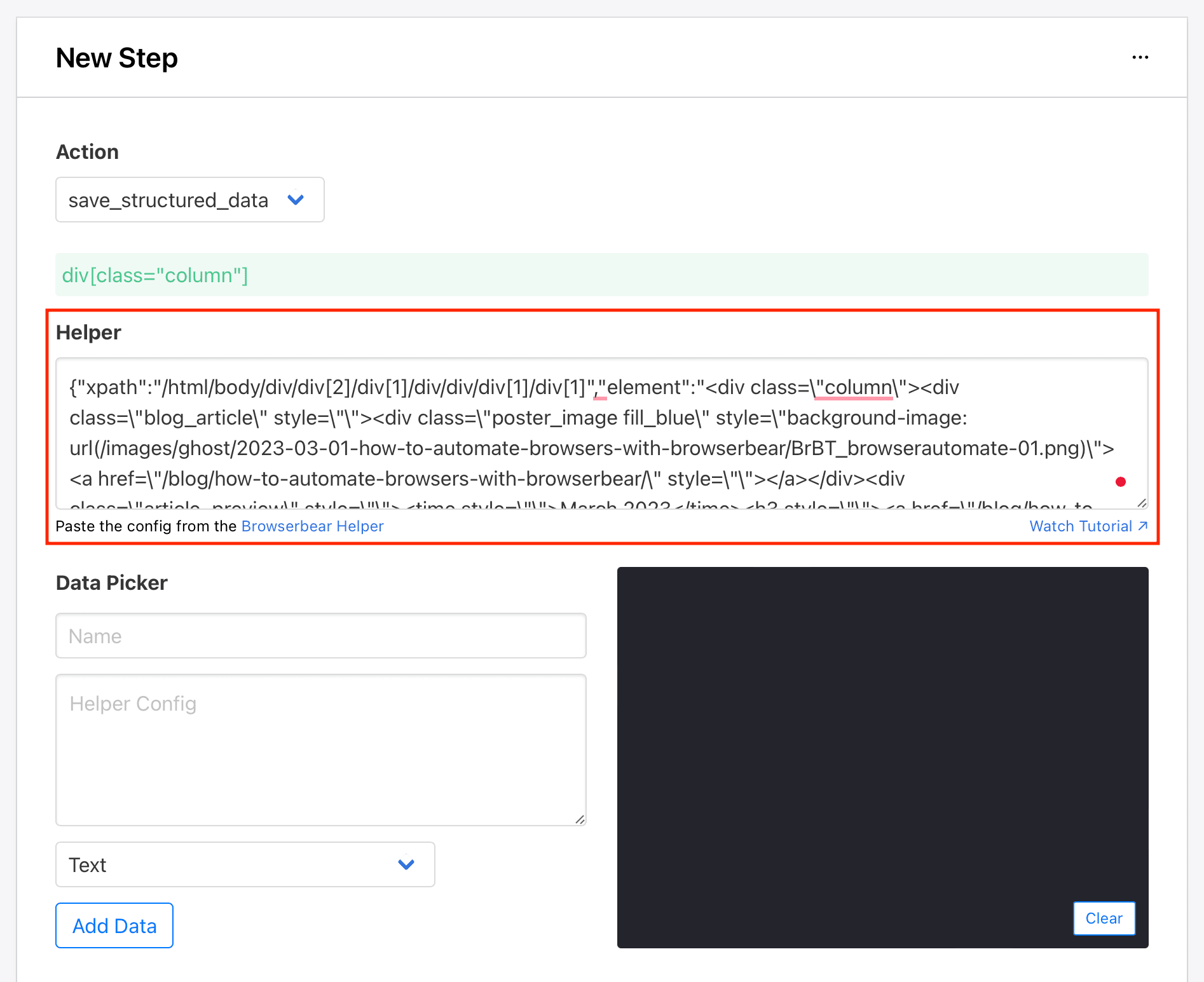
Now, let’s set up the individual HTML elements you want scraped. Return to your fully loaded destination, hover over the element you want to select, and click when you see a blue outline.
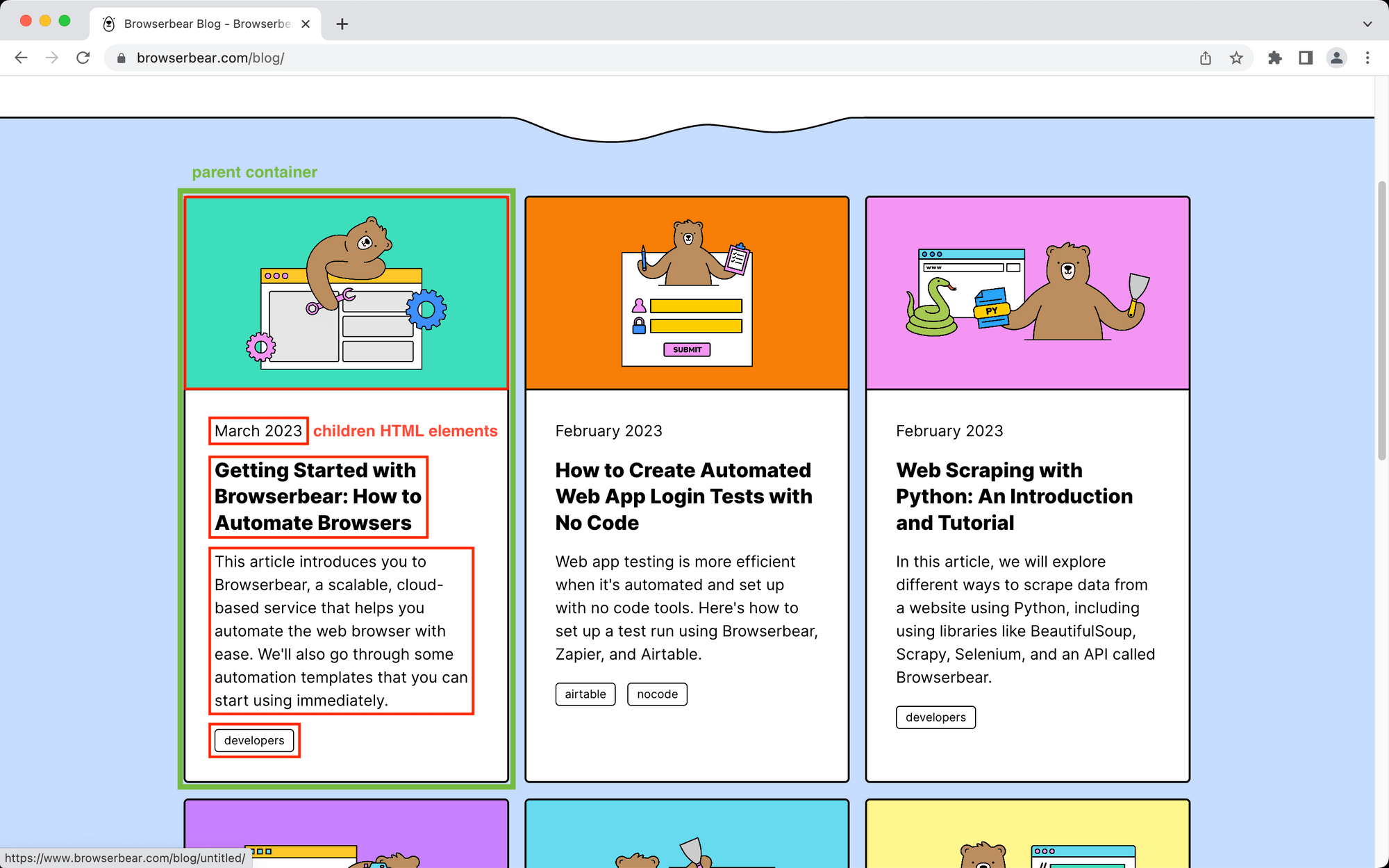
Copy the resulting config into the Helper Config section of the Data Picker. Add a name and specify the type of data you want to pull (the default is Text ).
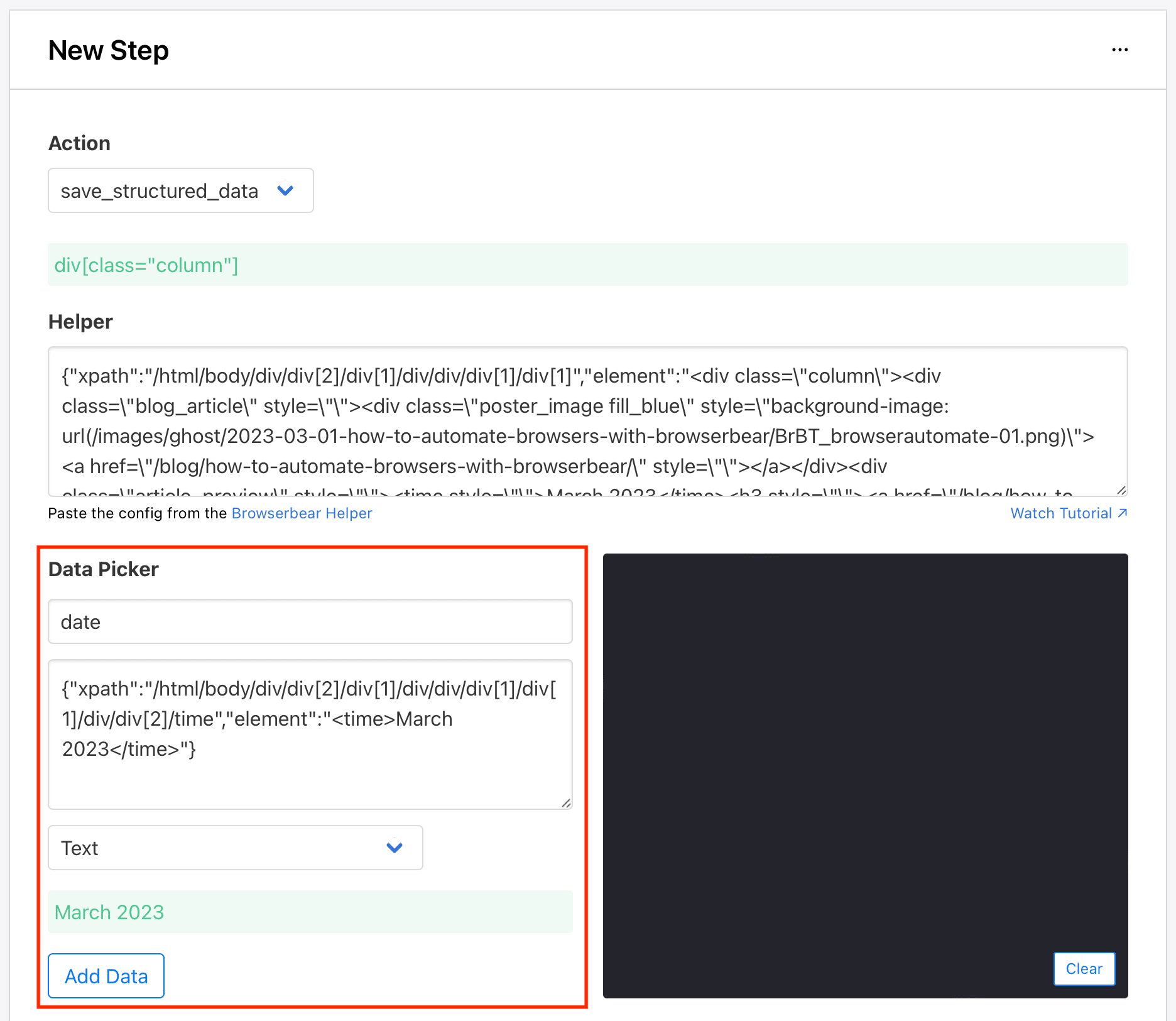
Click Add Data when you’re done.
Repeat this step for as many HTML elements as you want, then click Save once all elements have successfully loaded onto the log on the right side.
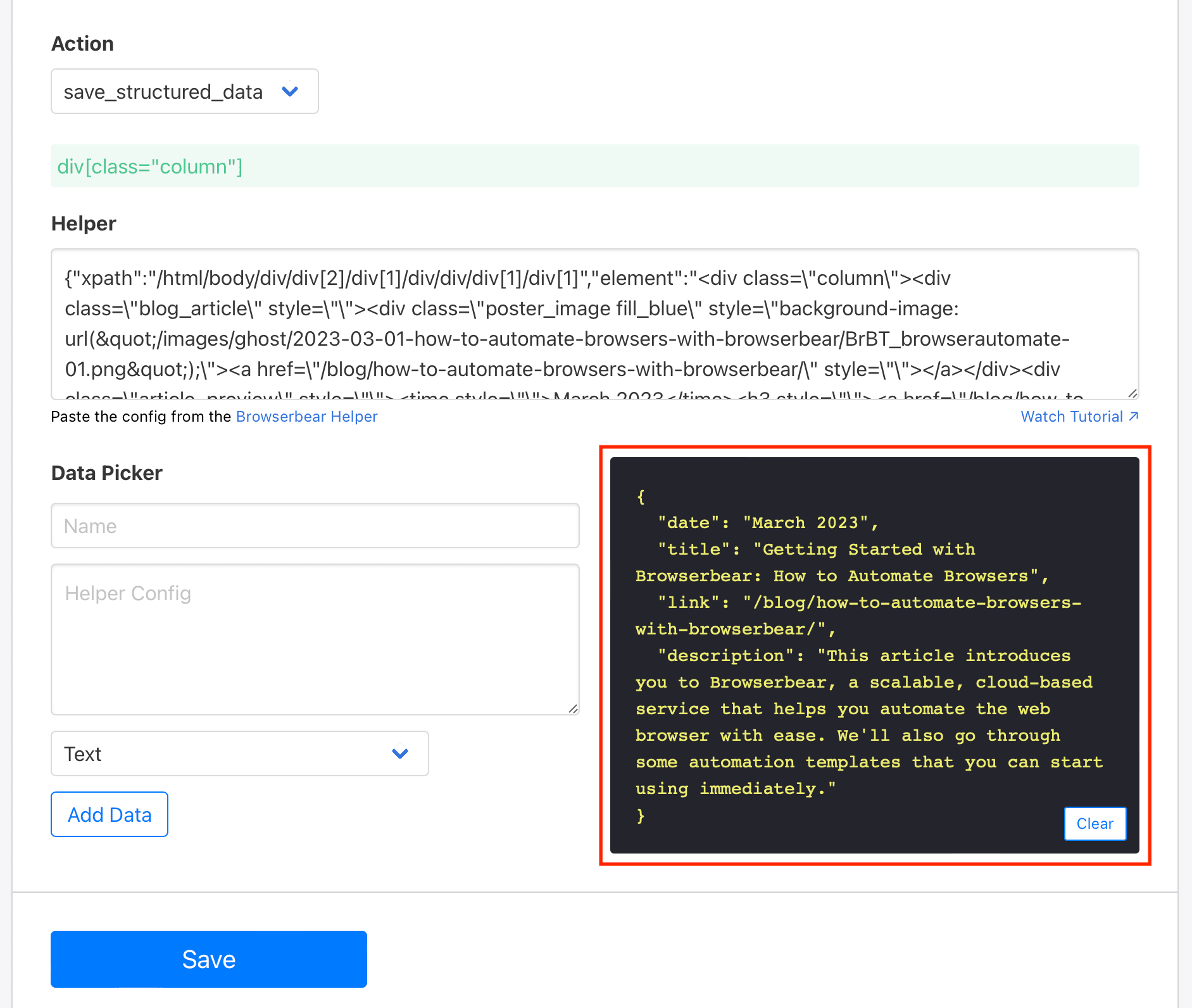
Now from your task page, click Run Task to test it.
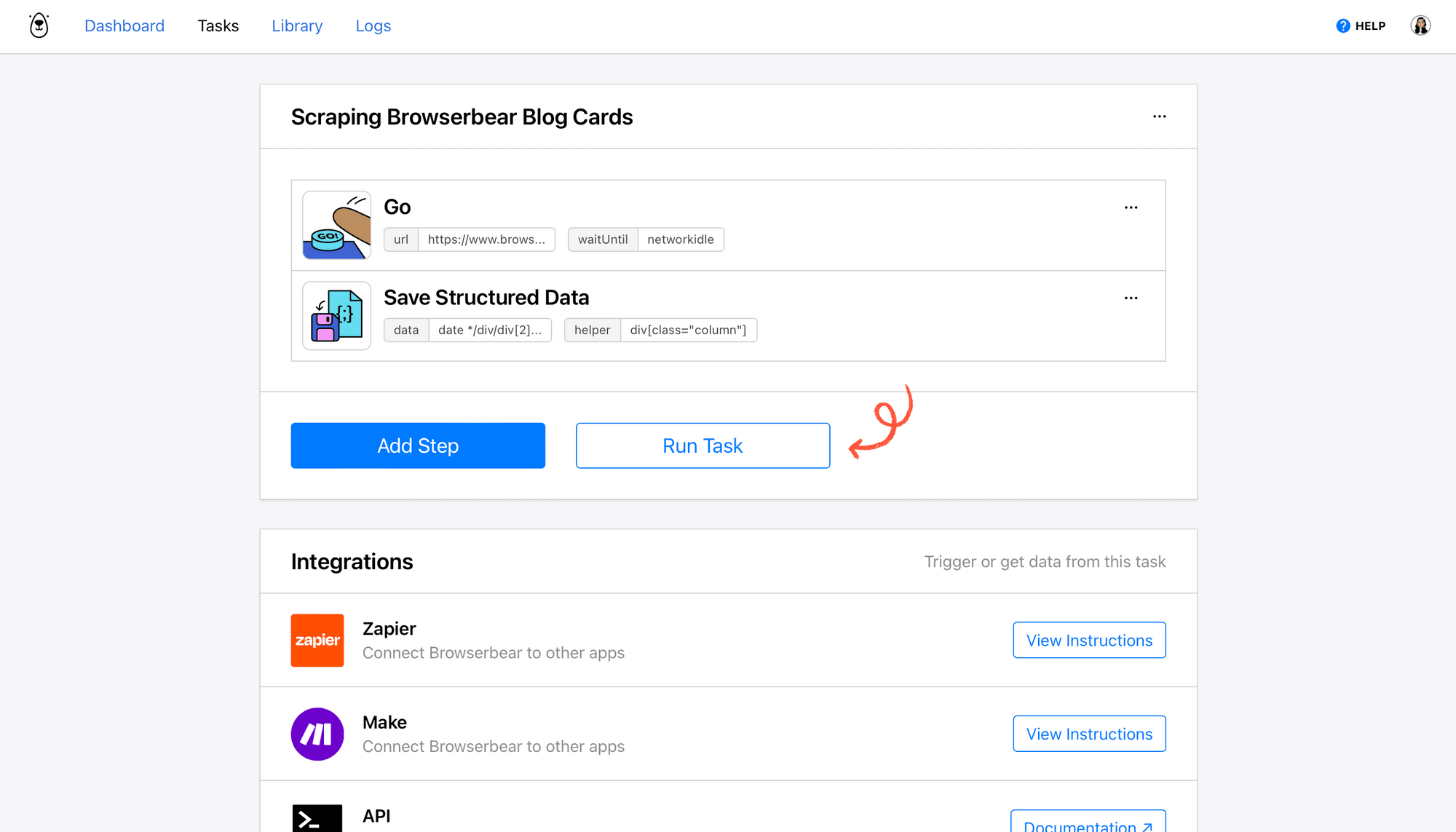
A run will appear at the bottom of your task page, showing if it is successfully completed.
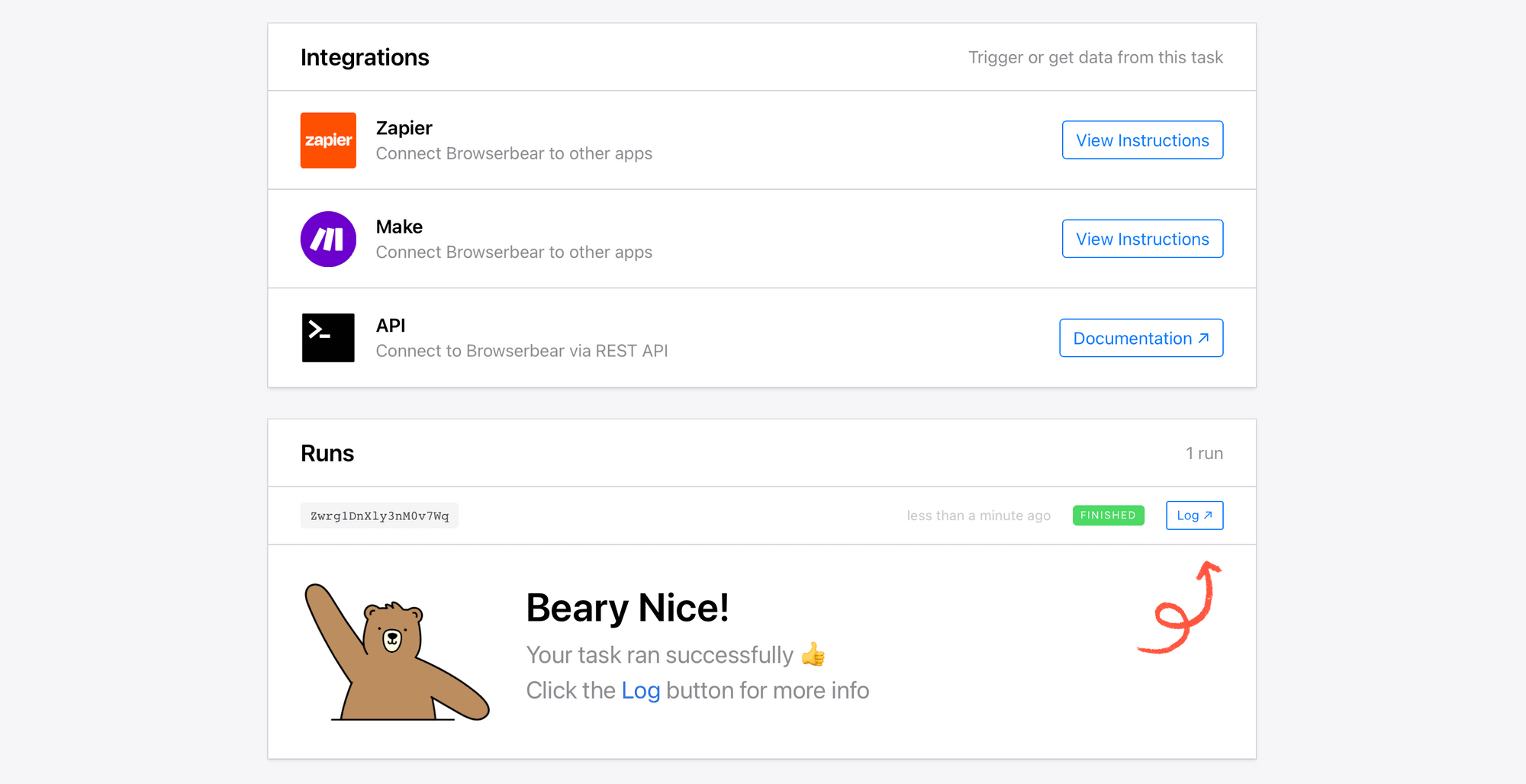
Click Log to see the output!
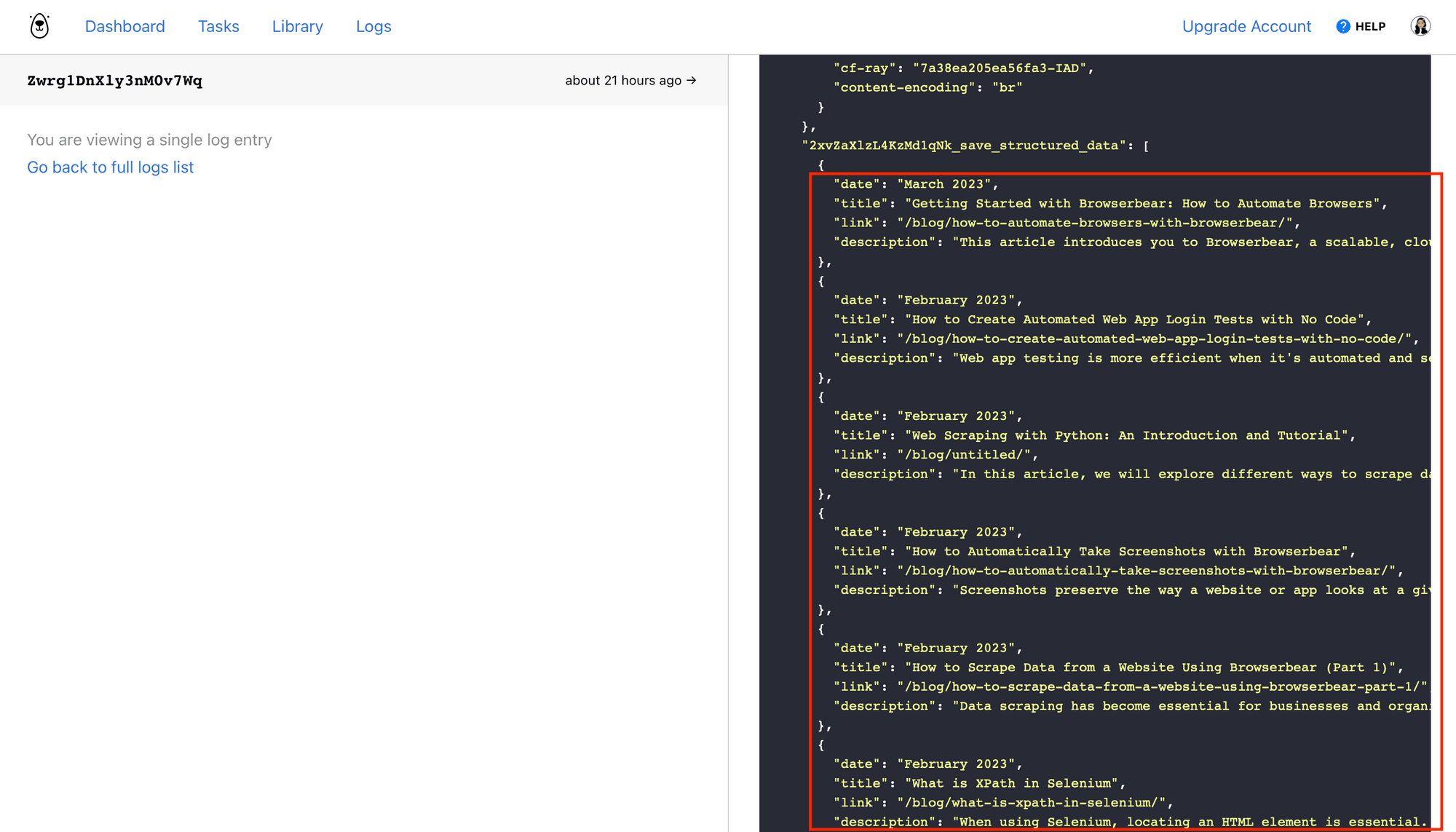
Make adjustments to your task until it yields the data set you want, then move on to the next step.
Build an Airtable Base to Store Scraped Data
Airtable will store your scraped data, keeping it easy to access if you want to add more to your workflow.
Log into Airtable and create a new base. Create fields for each element you’re scraping. We will use the following:
- Title
- Date
- Full URL (as formula:
CONCATENATE("https://browserbear.com",{Link})) - Link
- Description
Your full table will look something like this:
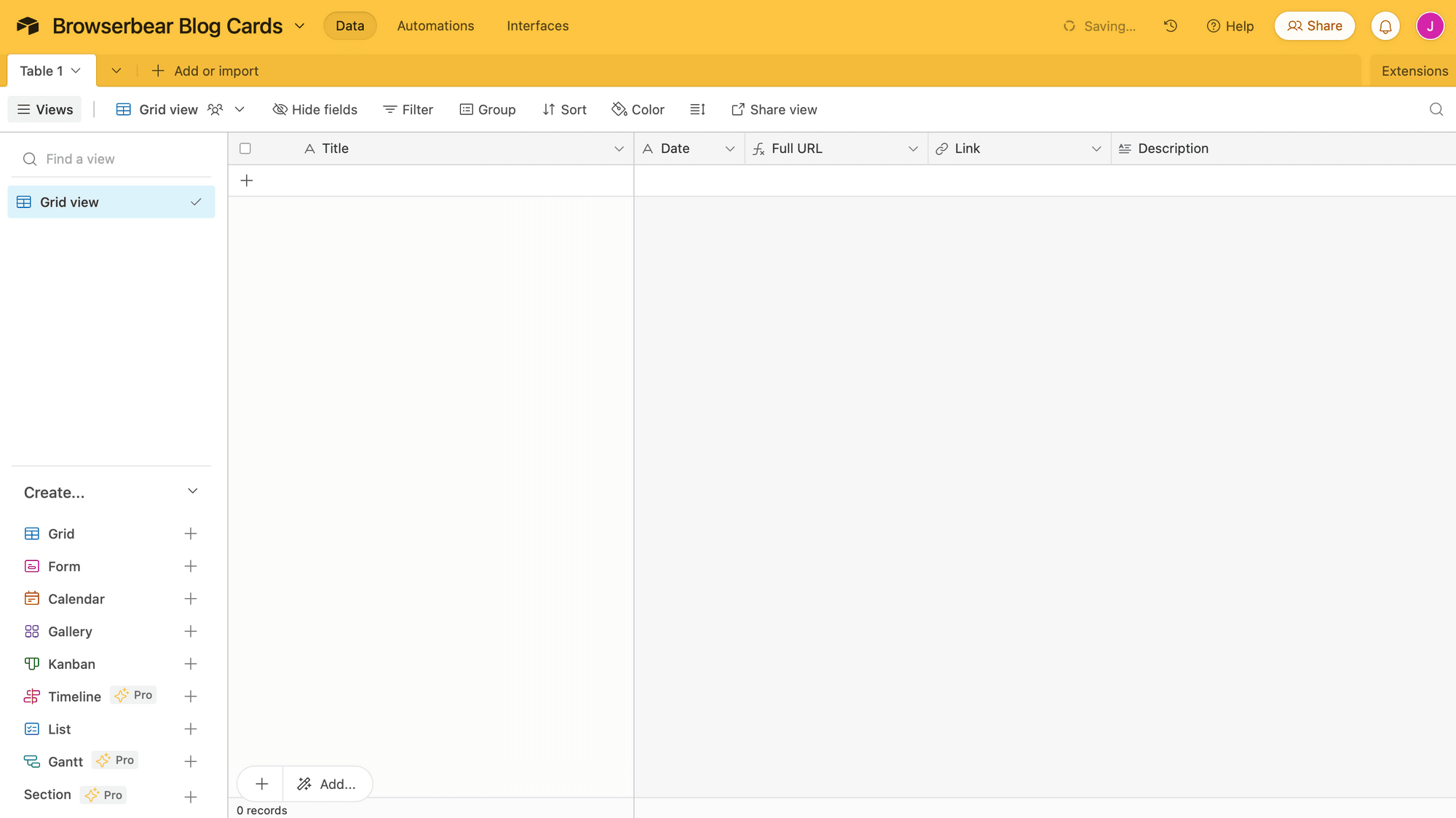
❗ Note : The full URL field is included simply because the link scraped from Bannerbear is only the file path and does not include the domain. The concatenate formula combines the two.
We will use Zapier to populate the table with scraped data in the next step.
Set up a Zap to Save Scraped Data
Now, we’ll set up a short, two-step zap that triggers when a run is completed in Browserbear and sends the output to Airtable.
Log into your Zapier account, click + Create Zap , then set up the following events:
Trigger: Run Finished in Browserbear
Choose Browserbear as the app and Run Finished as the event. You’ll need to connect your Browserbear account using your API key.
Set up the action by selecting the right task.
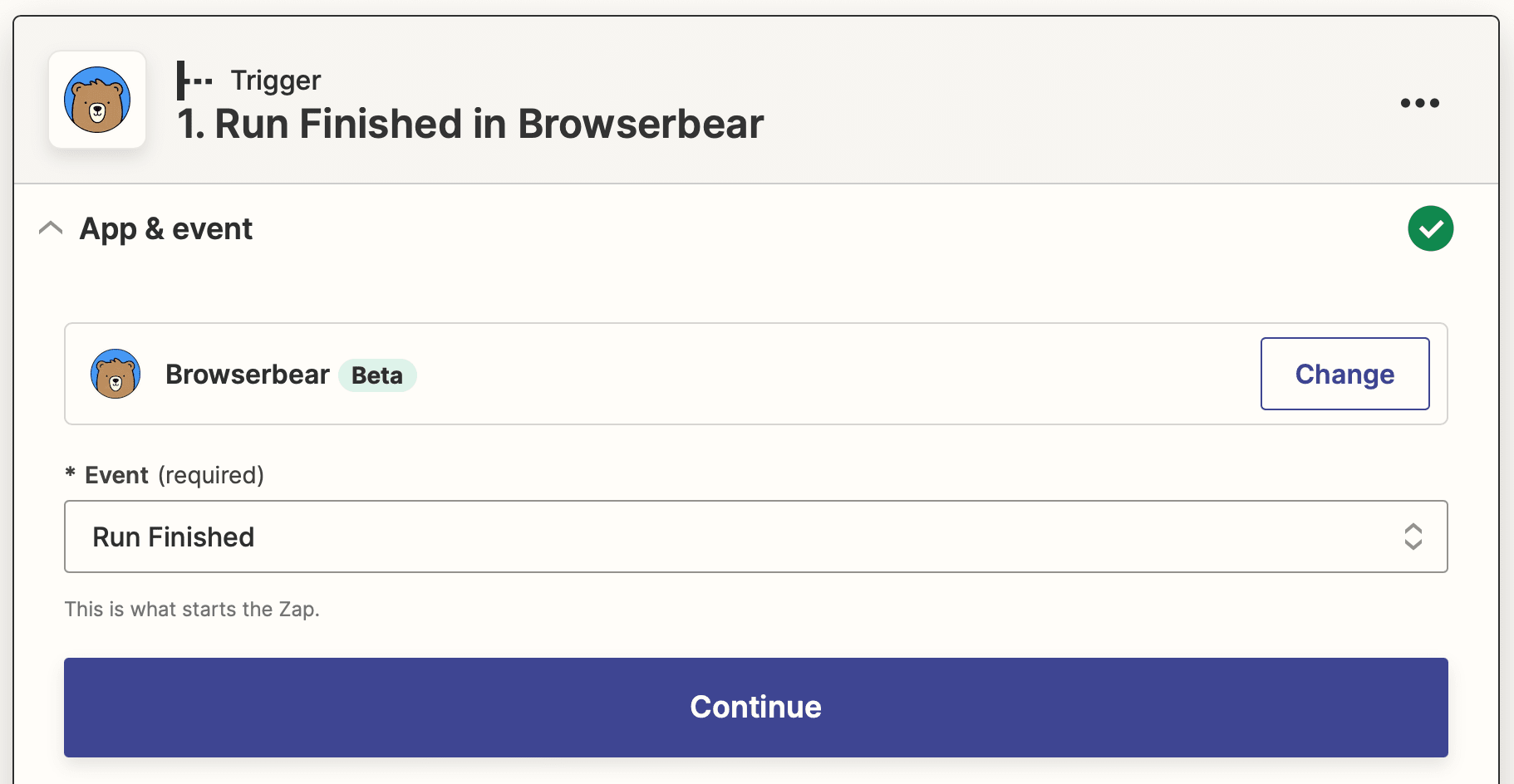
Test the trigger to make sure Zapier is able to find a completed run.
Action: Create Records (With Line Item Support) in Airtable
Choose Airtable as the app and Create Records (With Line Item Support) as the event. If you haven’t connected your account yet, do so using the API key found on your Account page.
Set up the action by choosing the right base and table, then mapping all of the scraped elements to their corresponding Airtable fields.
❗ Note : A maximum of 10 records can be created per request. If you need more, you may need to split your data up into batches and set up separate requests.
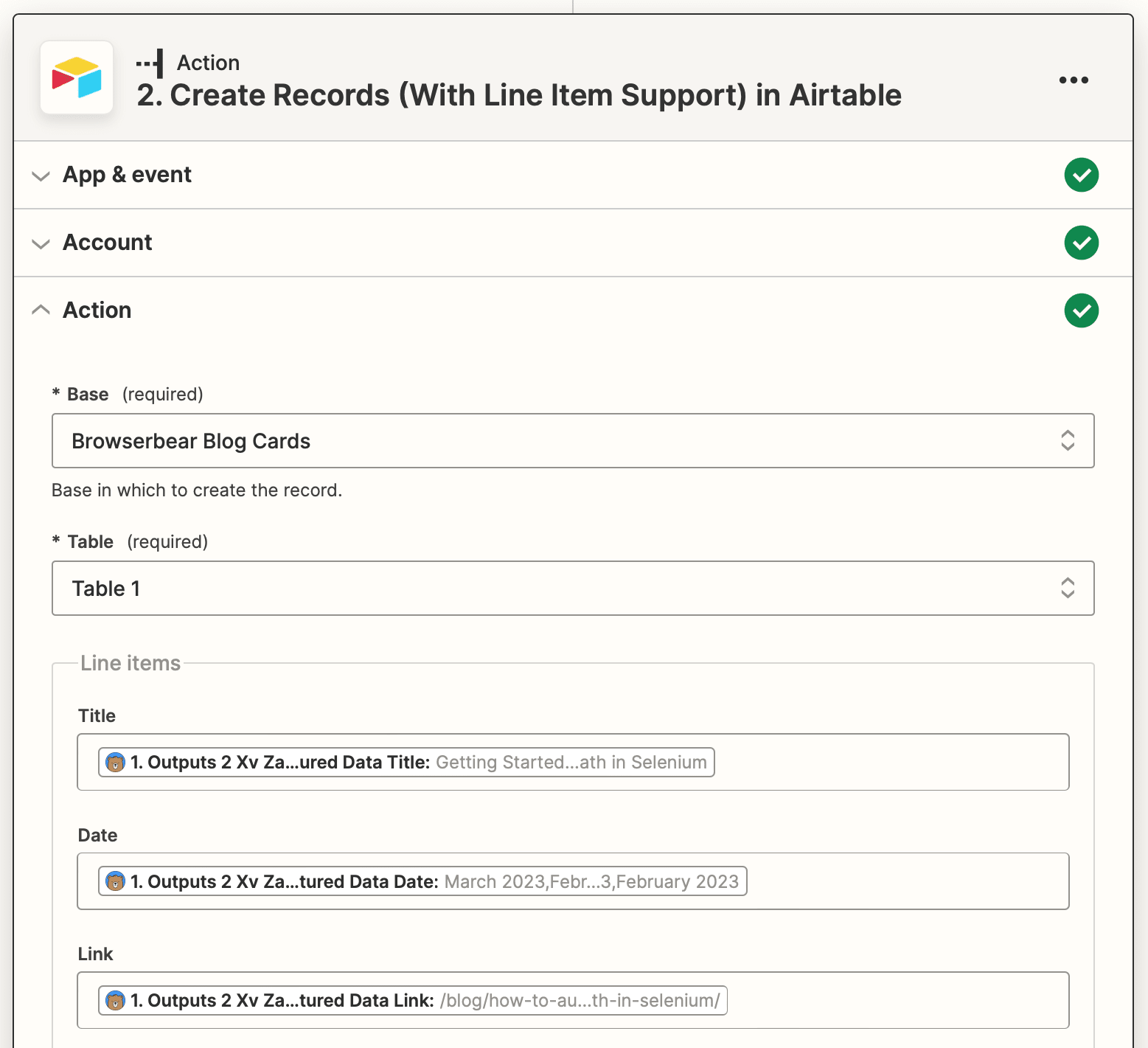
Test the action to make sure your data auto-populates the table. Your result should look something like this:

And there you have it—scraped data automatically sent to Airtable!
Bear Tip 🐻: You will need a separate automation that triggers the task run as frequently as needed. Consider setting up a different zap to schedule it on a recurring basis or in response to a certain event.
Automate Scraping Workflows
Automation relies on consistency and minimal manual input, so finding a way to automatically send properly formatted data across programs is crucial. But because there are so many nocode tools available today, you’ll never be short of creative ways to solve problems.
Want to learn more about saving scraped structured data? Check out these articles:
👉🏽 How to Automatically Scrape Website Data and Save to Notion (No Code)
👉🏽 How to Automatically Scrape Structured Data and Save to Google Sheets
And learn more about scraping with Browserbear here:
👉🏽 How to Scrape Data from a Website Using Browserbear (Part 1)
👉🏽 How to Scrape Data from a Website Using Browserbear (Part 2)



